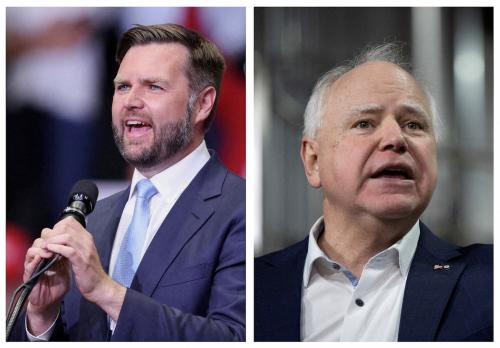The opponents of the Bipartisan Campaign Reform Act (BCRA), commonly known as McCain-Feingold and ratified recently by the Supreme Court, have railed ever since it was introduced in Congress about its supposedly naive assumptions and theories of constitutional engineering. They have confidently predicted doom for robust political speech, healthy political parties and meaningful standards of political corruption.
It was one thing when the critics were operating on the Senate floor or in legal briefs. It is another now, after 14 months of experience with the law, a time during which assertions about its pernicious effects could be tested against reality. That is a test failed by George F. Will — who cannot get out of his head or his column (most recently on Feb. 22 on this page) the idea that the BCRA is an abomination.
Will says that the act’s proponents wanted to get money out of politics and that they based their constitutional claim on the chimera of the appearance of corruption caused by the existing campaign finance rules. He slams the very concept of appearance of corruption as an invention of the Washington ethics industry. He says that reformers naively believed that ending national party “soft money” would mean the contributions made by labor unions, corporations and wealthy individuals would not find other, more subterranean routes into politics. And he claims that reformers really wanted to legislate “the correct quantity of speech about themselves, the proper times for it and certain restrictions on the content of it.”
Now, the reality:
Reformers did not want to drain money out of politics — and they didn’t. Will and other critics cling to an outdated image of the reformers. The people who put together the act, including lawmakers and outside experts, understood full well that it takes a lot of resources to run campaigns and communicate in modern American politics. The goal was not to reduce the total amount of money in campaigns; indeed, the act not only doubles the “hard money” limit on contributions to individual candidates, from $1,000 to $2,000, it almost doubles the aggregate amount individuals can contribute in a two-year election cycle. Moreover, political parties can raise increased amounts of hard money. The reality on the ground reflects the intentions of the reformers: The two political parties have raised more hard money in 2003 than they did in hard and soft money combined in the last comparable year before a presidential election. And, as anticipated, presidential and congressional candidates are taking full advantage of the increased contribution limits.
Reformers did want to end the shakedown schemes and access-peddling officeholders and parties used to raise money from corporations, unions and wealthy individuals. This was real corruption, not just the imagined “appearance” of it. In the soft-money world, with no limits on contributions, parties and officeholders would regularly put the squeeze on large donors. The record built up by the Senate investigative committee headed by Fred Thompson of Tennessee is filled with explicit examples of donors and pols testifying about how the money-for-access process worked. To argue that this kind of transaction was a meaningless invention of the ethics industry in Washington is the height of naivete. And it is an abuse that has largely disappeared under the new rules.
The money has not switched abruptly from the parties to outside groups, giving them unfair advantages. Most of the reports about shadow political party organizations reeling in large soft-money donations from corporations, unions and wealthy individuals — money that previously went to the parties — are based more on hype than fact. The parties have far outstripped these new groups in fundraising — and each has added hundreds of thousands of new small donors to its rolls. There is no evidence that previous corporate soft-money donors to parties are shifting these contributions to outside groups. With the link to elected officials broken, the pressure to give has greatly diminished.
No speech has been stifled or unreasonably regulated. Ad spots by independent groups still fill the airwaves. The new rules do not bar a single ad or message: They simply apply to outside groups and parties the same standards that apply to candidates and political action committees when it comes to a narrow group of electioneering broadcast ads. The preliminary ruling by the Federal Election Commission about how the rules will apply to “527s” — political groups set up under Section 527 of the Internal Revenue Code to secure tax-advantaged status — suggests that the commission will end up with a reasonable balance there, permitting outside activities but once again requiring a level and fair playing field for fundraising and disclosure.
The BCRA is not some sweeping reconstitution of the entire political process, nor is it a radical departure from constitutional reasoning established decades ago. It represents incremental change, designed to fit within the long-existing framework of the Supreme Court’s rulings on campaign reform. It has been accepted as such by the centrists on the court. And so far they and the reformers who built the law have been proven right.



Commentary
Op-edSo Far, So Good on Campaign Finance Reform
March 1, 2004